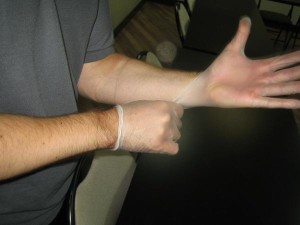
Catfish stings are caused by a type of ray-finned fish known for their prominent barbells called catfish. Named after their resemblance with cat’s whiskers, catfish have substantial commercial importance. They are served as part of dishes, either fished or farmed, but some species are used in aquarium hobby. Catfish are also popularly called “mud cats,” “polliwogs,” and “chuckleheads.”Catfish can be found in both freshwater and seawater, usually in the shallow, running water of rivers and lakes, and in the shores, respectively. They are can be found in all continents, but Antartica. While most species of catfish are harmless to humans, there are a few species that can sting and cause harm.They have three external spines are located near their fins and a stinger, which may release skin toxin and venom. And although most stings are non-venomous, extra precaution must still be taken to avoid these painful stings. The hand is the most common site of catfish stings. Catfish are not aggressive andthere has only been one reported case of specie of catfish attacking humans.
Causes of Catfish Stings
Most cases of catfish stings are due to accidents. The most common causes of catfish stings include:
- Accidental direct contact
- Stepping on the fish while bathing in freshwater bodies of water
- Improper handling after catching the fish
Symptoms of Catfish Stings
Stings, from any animal, are often very painful to humans. It is fairly obvious when a person has been stung. However, it may be difficult to determine which animal, especially in cases of water animals. Some of the common symptoms of catfish stings are the following:
- History of direct contact with any fish in any form of body of water
- Intense pain
- Inflammation at the site of the sting
- Severe tissue necrosis
- Puncture wounds and scrapes
Call for emergency medical services when the person is experiencing trouble breathing.
How to Give First Aid for Catfish Stings
First aid must be given immediately to alleviate symptoms and reduce discomfort experiences by the person stung. The following is advised to do in cases of catfish stings:
-
- Immediately get the person out of the water.
- If the victim is not breathing, initiate CPR.
- Remove the catfish spines using tweezers.
- Clean the wound by scrubbing it with fresh water and soap. Rinse thoroughly with fresh or salt water.
- To relieve pain, immerse the affected area in hot water, the hottest temperature a person is capable of. Do this for at least 30 minutes.
- Do not cover the wound or attempt to tape or sew it together.
- Take oral antibiotics for wounds that become infected.
- Pain medications such as, acetaminophen and ibuprofen may be taken every six to eight hours.
Medical emergencies may occur anywhere. And thus, it is highly recommended to join in First Aid Courses before venturing into the wild or other places where medical help may be unreachable immediately. Learning how to treat and manage catfish stings and other stings may help avoid complications and provide comfort to the ailing victim.
